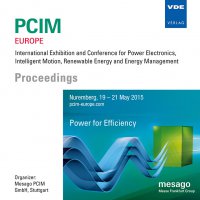High temperature reliability of power module substrates
Conference: PCIM Europe 2015 - International Exhibition and Conference for Power Electronics, Intelligent Motion, Renewable Energy and Energy Management
05/19/2015 - 05/20/2015 at Nürnberg, Deutschland
Proceedings: PCIM Europe 2015
Pages: 7Language: englishTyp: PDF
Personal VDE Members are entitled to a 10% discount on this title
Authors:
Hamilton, Dean; Jennings, Michael; Mawby, Philip (University of Warwick, UK)
Mills, Liam (TT Electronics Semelab Ltd, Lutterworth, UK)
Bowen, James (University of Birmingham, UK)
Abstract:
The thermal cycling reliability of candidate copper and aluminium power substrates has been assessed for use at temperatures exceeding 300deg C peak using a combination of thermal cycling, nanoindentation and finite element modelling to understand the relative stresses and evolution of the mechanical properties. The results include the relative cycling lifetimes up to 350deg C, demonstrating almost an order of magnitude higher lifetime for active metal brazed Al / AlN substrates over Cu / Si3N4, but four times more severe roughening and cracking of the Ni-P plating’s on the Al / AlN (DBA) substrates. The nonlinear finite element modelling illustrated that the yield strength of the metal and the thickness of the ceramic are the main stress controlling factors, but comparisons with the cycling lifetime results demonstrated that the fracture toughness (resistance) of the ceramic is the over-riding controlling factor for the overall passive thermal cycling lifetimes. In order to achieve the highest substrate lifetime for the highly stressed high temperature thermal cycled applications, the optimum solution appears to be annealed copper, brazed on to a thicker than normal or higher fracture toughness Si3N4 ceramic.


